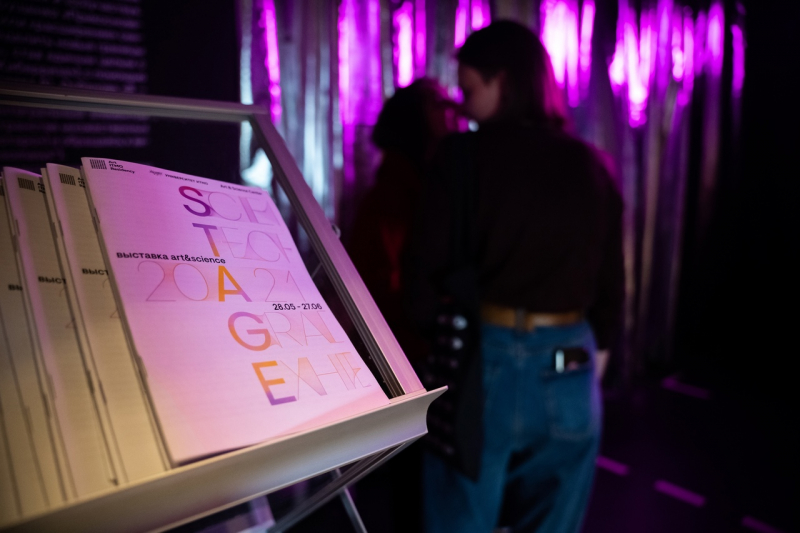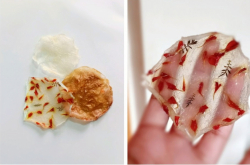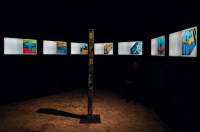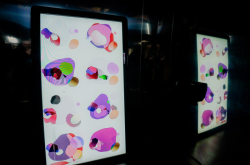Upon entering the gallery, visitors must go through a silver curtain, which is the creators’ way of showing that the exhibition’s name is not only an abbreviation for Science & Technological Art Graduate Exhibition, but also a literal performance space.
The silver curtain hides from the audience not one but several stages with eight works by this year’s graduates of ITMO’s Art & Science Master’s program. Although the students’ art projects have no common theme, they complement one another by commenting on various issues at the intersection of art and science: ethics, the interactions between various life forms, and the coexistence of the living and the synthetic.
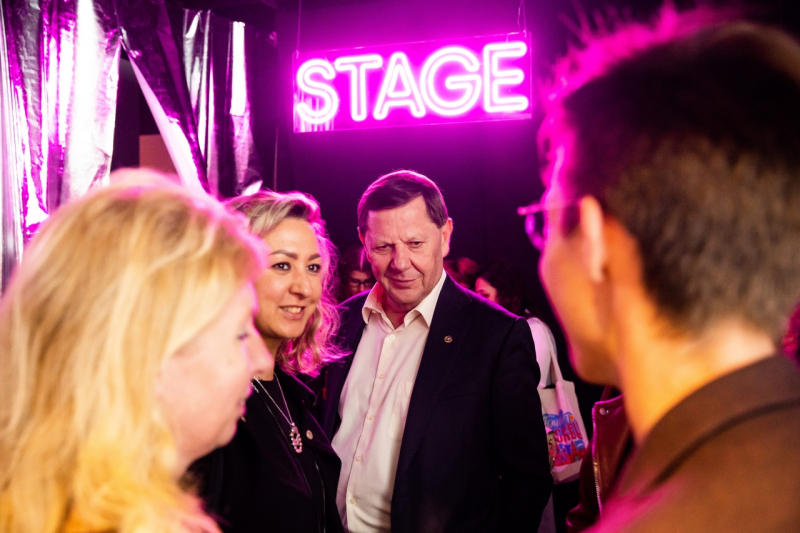
Vladimir Vasilyev at the STAGE opening
“Working on the exhibition was a lively time. Our students created their projects before our very eyes and we didn’t know what to expect until the very last moment,” says Khristina Ots, the exhibition’s curator. “Initially, when coming up with the name, we thought about a stage on which to introduce these new names. But our students did a great job of transforming the space, thus giving each project a separate stage. This isolation is kind of a reflection on the post-pandemic world, in which we have become so used to self-isolation that even our art requires a separate space.”
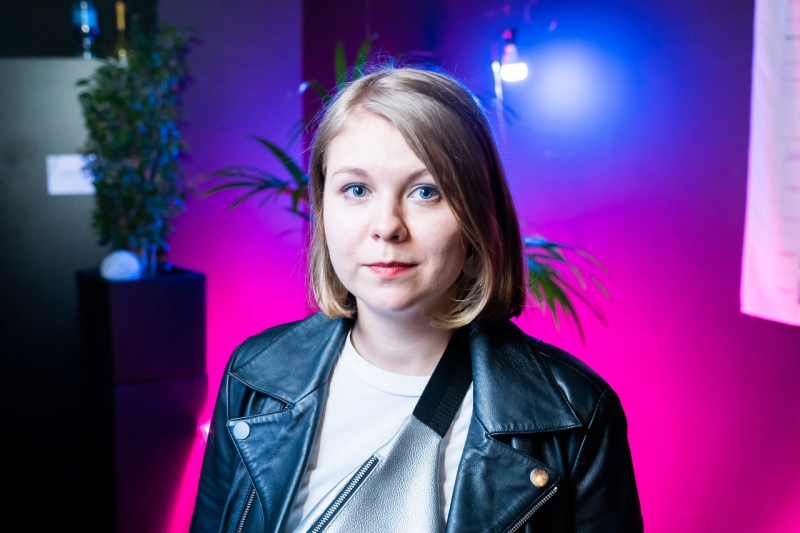
Khristina Ots
Feel our tears
At their core, the art projects draw from multiple fields, namely machine learning, computer vision, and biochemistry. Polina Belokrenitskaya, for instance, addresses the topic of the symbiosis of different species. Her project entitled Speculative Research on Plant-Bird Communication aims to demonstrate the complex and sometimes unpredictable nature of interactions between different species.
For her project, the artist watered three domestic potted plants with three different liquids: regular water, water with bird droppings, and water from a parrot’s water bowl. As a result, the last liquid, rich in the elements of a bird’s genome, turned out to be the most favorable for the plant.
Another biology-related work was presented by Sofia Osbanova, who invited the audience to experience animal emotions through interacting with their tears. In this project, the artist tried to eliminate the barriers that prevent humans from perceiving other experiences, be that human, mammal, or bird.

Sofia Osbanova
“Here, animals are a universal metaphor for “the other,” who is hidden behind the communicative barrier. The barrier is why we often go to extremes and either humanize animal behavior or completely deny that animals can feel different emotions. And I’m sure that the truth is somewhere between these two extremes, so I invite visitors to revisit animal experiences by applying tears of reptiles, birds, and mammals on themselves.”
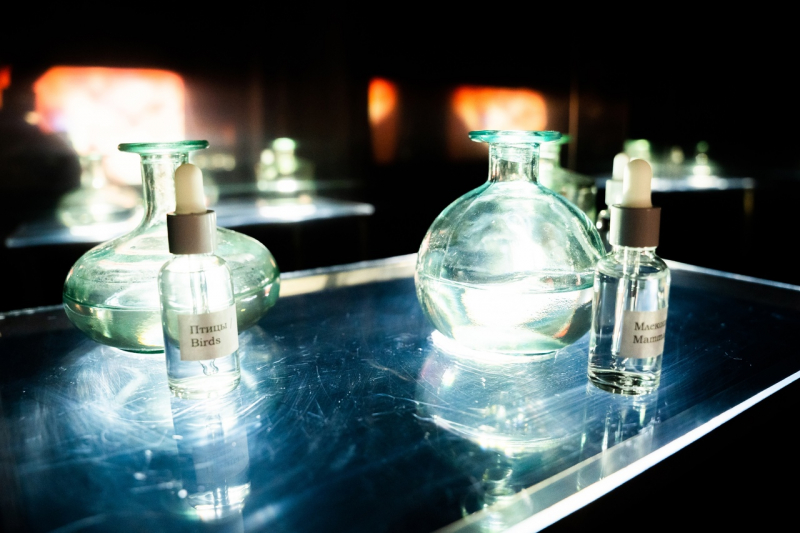
By the way, no animals were harmed in the making of the project – instead, the artist used lab equipment to synthesize liquids chemically identical to animal tears.
Engaging all your senses
The majority of the presented projects are immersive, which means that they interact directly with the audience. For example, visitors can change the form of Grigory Kirgizov’s work called Cyberrhiza with their movements.
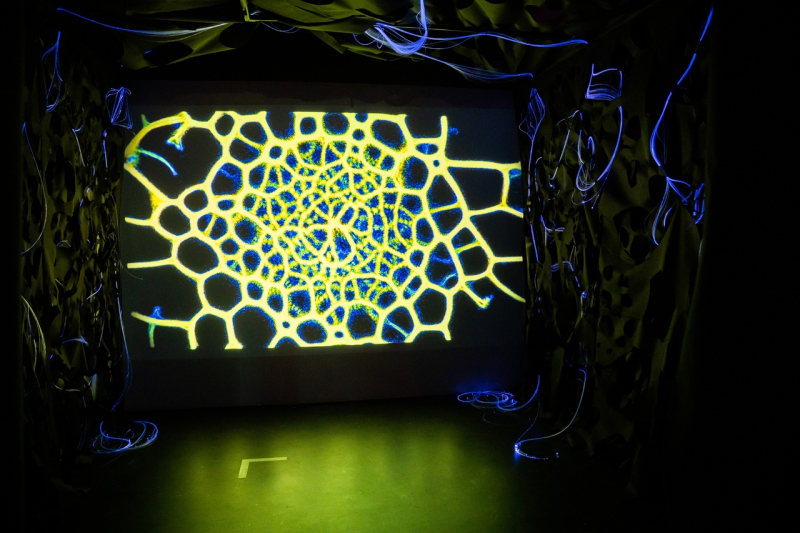
Cyberrhiza by Grigory Kirgizov
A similar concept can be observed in Touch, a project by Lisa Andrushchenko. Visitors entering the small space must put on a heart rate monitor. As soon as the device detects a heartbeat, images appear in front of the visitor's eyes, their dynamics changing along with the observer’s heart rate.
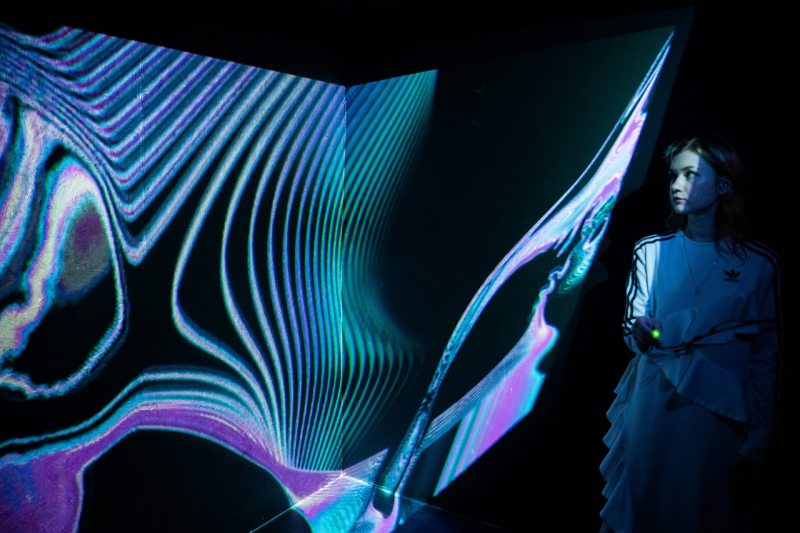
Touch by Lisa Andrushchenko
With her Sense Mode, the artist Dina Zotova wants to introduce viewers to the experience of synesthesia – a neurological phenomenon in which the stimulation of one sense causes the automatic reaction of another. In simple terms, synesthetes can not only hear, but also see sound, or taste words.
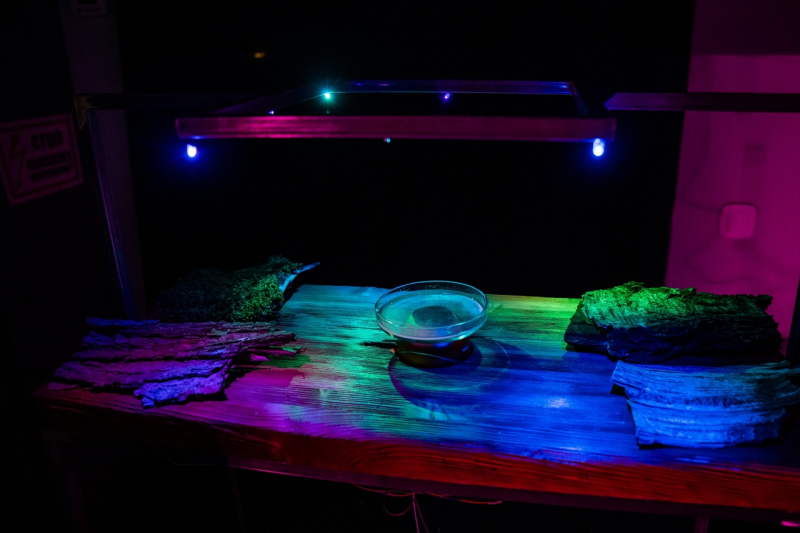
Sense Mode by Dina Zotova
By touching various natural objects, participants can feel their texture, as well as hear sounds and see changes in lighting. “The idea was to give the audience a sense of what people with synesthesia experience,” the artist explains her idea.
Can robots feel fear?
For the first time, the exhibition featured works created by students of other programs who decided to take advantage of this year’s Art Project as a Thesis initiative.
“Starting from 2020, all Master’s students at ITMO can present an interdisciplinary project as their thesis and earn a degree in their specialization, be it physics, chemistry, or robotics. This is an opportunity for students to interact with curators and artists, immerse themselves in art, and improve their creative thinking. And, most importantly, students can see their field of study from a whole other angle,” explains Aliya Sakhariyeva, the head of ITMO’s Art & Science Center.

The opening of the Science & Technological Art Graduate Exhibition (STAGE) at ITMO's AIR gallery
“Students were able to attend consultations with practicing artists Natalia Fedorova and Helena Nikonole, the exhibition’s curator Khristina Ots, and the center’s technical specialist Aleksei Feskov, as well as numerous lectures and artist talks. Projects were created in three key stages, each including meetings with an expert board that provided feedback and guidance,” adds Maria Moschenskaya, a curator of the Art Project as a Thesis initiative.
One of the examples is N-Tracker, the project presented by Yulia Anikienko and Galina Alferova. The idea is that a camera captures the features of each visitor and then generates an image of another, similar-looking person. The project gives viewers a chance to find themselves in others.
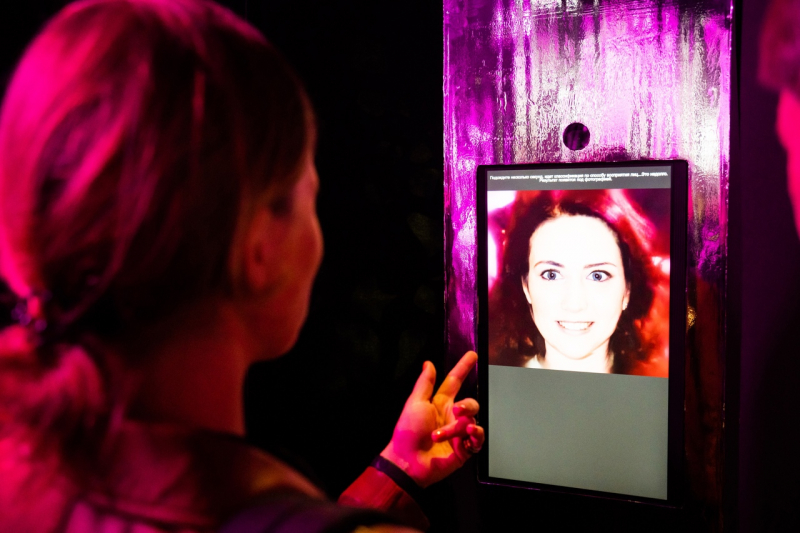
N-Tracker by Yulia Anikienko and Galina Alferova
Mikhail Shalepo’s Kisonem addresses the topic of machines and emotions and raises a number of relevant questions. Can inanimate objects experience or at least understand emotions? Is a machine capable of reading human emotions during a conversation? And do robots emote with their answers and reactions?

Kisonem by Mikhail Shalepo
“You may even scare my machine: if you make an aggressive or sad face, it will understand it and start to change its shape – and even may turn red. Thanks to a neural network, the installation is capable of reading our emotions. It analyzes images from cameras, just as our brain analyzes data coming from our eyes. I must say, several artists have already approached me and offered collaborations,” tells us Mikhail.
Taking art to a wider audience
Established in 2020, the center’s graduate exhibitions give young science artists a chance to put their art projects on display – a tradition found at art schools and storied institutions.
“This initiative is especially important for young artists wishing to present their finished work and include it on their CVs, and we encourage our students to take this responsibility very seriously,” explains Dimitri Ozerkov, the head of the educational program. “We strive for the highest quality by creating catalogs and publishing press releases. Anyone can attend our exhibitions, and we hope that collectors and art experts interested in this field will come to us, too, and see the students’ projects.”
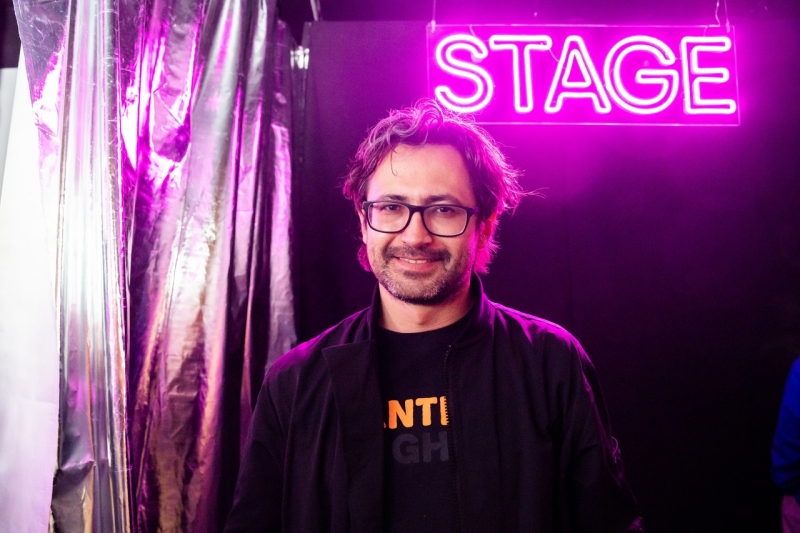
Dimitri Ozerkov
Dmitry also noted that they plan to hold such exhibitions annually.
“Art & Science is much more popular abroad than in Russia. This is the field of the future and such exhibitions may help to develop it in our country. Of course, we can’t know for sure what might take off, but we do all in our power to bring our students’ works to a wider possible audience,” concludes Dimitri Ozerkov.
